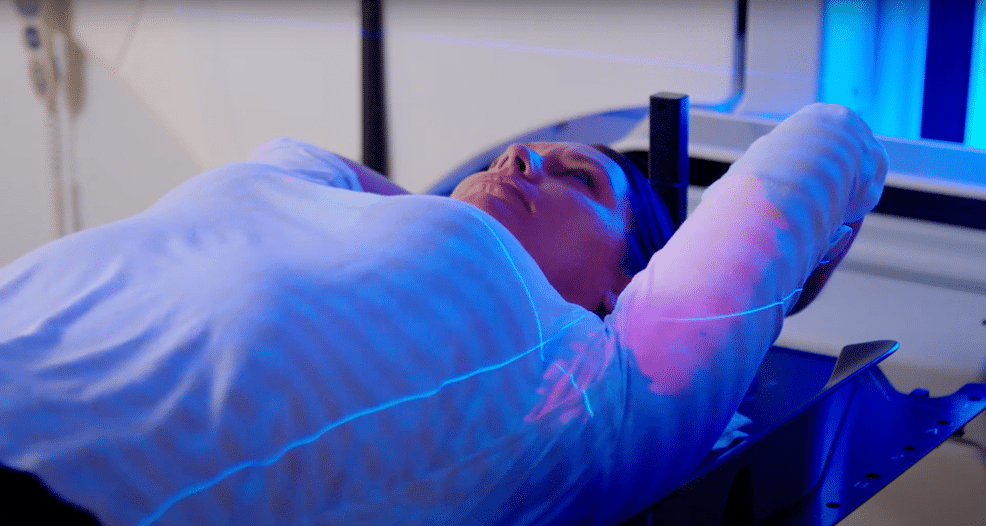At Oklahoma Cancer Specialists and Research Institute (OCSRI), Lead Radiation Therapist Megan Barrett has seen firsthand how C-RAD’s Surface Guided Radiation Therapy (SGRT) solutions have transformed treatment precision, workflow consistency, and patient confidence.
“Before SGRT, we relied on tiny tattoos and laser lines to align patients,” Barrett explains. “It worked, but it left room for variation and second-guessing. Now, with C-RAD’s technology, we can see the entire patient surface in real time and make exact adjustments before a single beam is delivered.”
C-RAD’s Catalyst⁺ HD system uses structured light to create a 3D surface map of the patient’s body that continuously compares live positioning data to the reference scan from simulation. The system supports a wide range of treatments, including 3D, IMRT, DIBH, and SRS/SBRT.

“C-RAD is basically doing a 2.3 million point setup, captured in real time, instead of three-point tattoo setup.” Barrett explains. “That level of detail eliminates uncertainty and gives us confidence that every patient is positioned precisely.”
A Second Set of Eyes in the Treatment Room
SGRT acts as a constant, automated observer throughout treatment. “It gives us peace of mind knowing the patient has not moved since we stepped out of the room.” Barrett says. If a patient shifts or coughs—such as during a lung treatment—the Catalyst⁺ HD system automatically pauses the beam until the patient returns within tolerance. This real-time monitoring safeguards treatment accuracy while reducing the need for unnecessary imaging or re-setup.
Empowering Patients Through Light
At OCSRI, SGRT has also become a tool for patient communication and empowerment. During Deep Inspiration Breath Hold (DIBH) treatments, Barrett’s team uses C-RAD’s ceiling-mounted light panels to visually guide patients through each breath. As patients inhale, the room glows green when they reach the target position, blue when they’re close, and orange if they are out of position.

Visual-Light Coaching: Ceiling-mounted panels enable visual coaching for real-time patient respiratory feedback
“The whole room lights up, and patients immediately understand what to do,” Barrett explains. “It makes them active participants in their care. That visual connection builds trust and reduces anxiety.”
Building Consistency and Confidence
Initially, Barrett’s team used SGRT only for select cases such as DIBH and SBRT. But after adopting C-RAD’s Catalyst⁺ HD workflow for every patient, efficiency and consistency improved dramatically. “Once we standardized SGRT across all treatments, everything became smoother,” she notes. “Our setups were faster, our imaging corrections dropped, and our overall confidence soared.”
For Barrett and her team, SGRT has become much more than a positioning technology—it’s a new standard of care. “Surface guidance allows us to treat patients more safely, more accurately, and with greater peace of mind,” she says. “Once you can see the whole picture, there’s no going back.”


